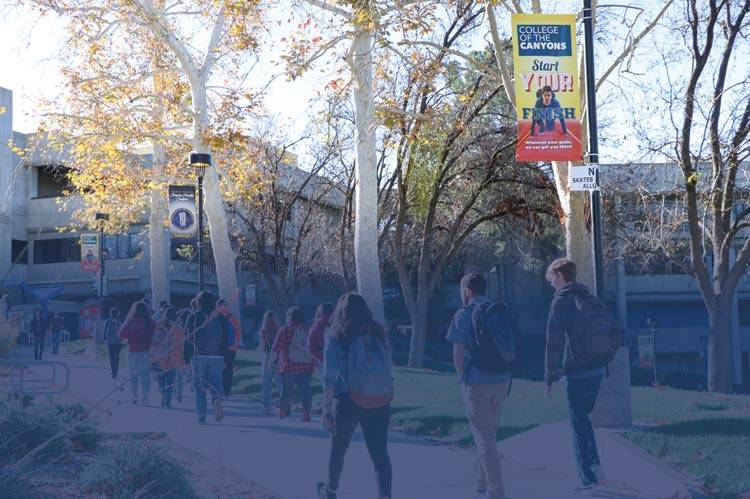Engineering Course Descriptions
ENGR 096 - Discovering Engineering (2 units, non-transferable)
This course explores the various engineering disciplines by examining engineering problems and their solutions. Includes essential techniques for success in subsequent engineering courses and orientation to relevant computer-based technologies.
Pre-requisite: none
ENGR 101 - Introduction to Engineering (2 units, CSU/UC transferrable)
Explores the branches of engineering, the functions of an engineer, and the industries in which engineers work. Explains the engineering education pathways and explores effective strategies for students to reach their full academic potential. Presents an introduction to the methods and tools of engineering problem solving and design including the interface of the engineer with society and engineering ethics. Develops communication skills pertinent to the engineering profession.
Pre-requisite: MATH 102 (Trigonometry)
ENGR 110 - Introduction to Engineering Graphics with AutoCAD (3 units, CSU/UC transferrable)
Covers the principles of engineering drawings in visually communicating engineering designs and an introduction to computer-aided design (CAD). Topics include the development of visualization skills; orthographic projections; mechanical dimensioning and tolerancing practices; and the engineering design process. Assignments develop sketching and 2-D and 3-D CAD skills. The use of CAD software is an integral part of the course.
Pre-requisite: MATH 102 (Trigonometry)
ENGR 114 - Solids Modeling for Mechanical Drafting (3 units, CSU/UC transferrable)
Introduces the computer aided aspects of mechanical design and development utilizing the solids modeling program Solidworks. Emphasizes surface modeling and "top-down" design as related to mechanical objects and their assembly.
Pre-requisite: none
ENGR 151 - Materials of Engineering (3 units, CSU/UC transferrable)
Presents the internal structures and resulting behaviors of materials used in engineering applications, including metals, ceramics, polymers, composites, and semiconductors. The emphasis is upon developing the ability both to select appropriate materials to meet engineering design criteria and to understand the effects of heat, stress, imperfections, and chemical environments upon material properties and performance. Includes the properties of materials as related to atomic and crystal structure.
Pre-requisite: CHEM 201 (General Chemistry 1) and PHYSIC 220 (Mechanics of Solids and Fluids)
ENGR 151L - Materials of Engineering Lab (1 unit, CSU/UC transferrable)
This course is the experimental exploration of the connections between the structure of materials and materials properties. Laboratories provide opportunities to directly observe the structures and behaviors discussed in ENGR 151. Students will operate testing equipment to analyze experimental data and to prepare reports. Presents crystalline structures, mechanical properties of metals, the electrical properties of semiconducting materials, and polymers in a laboratory setting. Investigates experiments involving cold-working, heat treatment, material hardness, ductile-to-brittle fracture behavior, fatigue, equilibrium phase diagrams, steel microstructure, corrosion, and process methods.
Pre-requisite: CHEM 201 (General Chemistry 1) and PHYSIC 220 (Mechanics of Solids and Fluids)
Co-requisite: ENGR 151 (Materials of Engineering)
ENGR 152 - Statics (3 units, CSU/UC transferrable)
Applies the principles of mechanics to rigid bodies in two and three-dimensional equilibrium. Focuses on analytical and graphical solutions using force vectors and equivalent force systems to solve problems pertaining to friction, centroids, center of gravity, and moments of inertia for areas.
Pre-requisite: PHYSIC 220 (Mechanics of Solids and Fluids) and MATH 212 (Calculus 2)
ENGR 220 - Programming and Problem-Solving in MATLAB (3 units, CSU/UC transferrable)
Utilization of the MATLAB environment to provide students with a working knowledge of computer-based problem-solving methods relevant to science and engineering. Introduction of the fundamentals of procedural and object-oriented programming, numerical analysis, and data structures.
Pre-requisite: MATH 211 (Calculus 1)
ENGR 230 - Dynamics (3 units, CSU/UC transferrable)
Fundamentals of kinematics and kinetics of particles and rigid bodies. Topics include kinematics of particle motion; Newton's second law, work-energy and momentum methods; kinematics of planar motions of rigid bodies; work-energy and momentum principles for rigid body motion; mechanical vibrations. (Formerly ENGR-155)
Pre-requisite: ENGR 152 (Statics)
ENGR 240 - Strength of Materials (3 units, CSU/UC transferrable)
Pre-requisite: ENGR 152 (Statics)
Presents stresses, strains and deformations associated with axial, torsional and flexural loading of bars, shafts and beams, as well as pressure loading of thin-walled pressure vessels. In addition, the course also covers stress and strain transformation, Mohr's Circle, ductile and brittle failure theories, buckling of columns, and statically indeterminate systems. Formerly ENGR-161.
ENGR 260 - Electrical Circuits (3 units, CSU/UC transferrable)
Introduces analysis of electrical circuits. Use of analytical techniques based on the application of circuit laws and network theorems. Analysis of DC and AC circuits containing resistors, capacitors, inductors, dependent sources, operational amplifiers, and/or switches. Natural and forced responses of first and second order RLC circuits; the use of phasors; AC power calculations; power transfer; and energy concepts. ENGR-260 & ENGR-260L formerly ENGR-153.
Pre-requisite: PHYSIC 221 (Electricity and Magnetism)
ENGR 260L - Electrical Circuits Laboratory (1 unit, CSU/UC transferrable)
Co-requisite: ENGR 260 (Electrical Circuits)
Introduces the construction and measurement of electrical circuits. Basic use of electrical test and measurement instruments including multimeters, oscilloscopes, power supplies, and function generators. Use of circuit simulation software. Interpretation of measured and simulated data based on principles of circuit analysis for DC, transient, and sinusoidal steady-state (AC) conditions. Elementary circuit design. Practical considerations such as component value tolerance and non-ideal aspects of laboratory instruments. Construction and measurement of basic operational amplifier circuits. ENGR-260 & ENGR-260L formerly ENGR-153.

 My Canyons
My Canyons  Canvas
Canvas 
